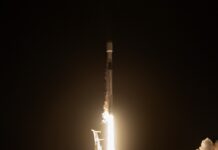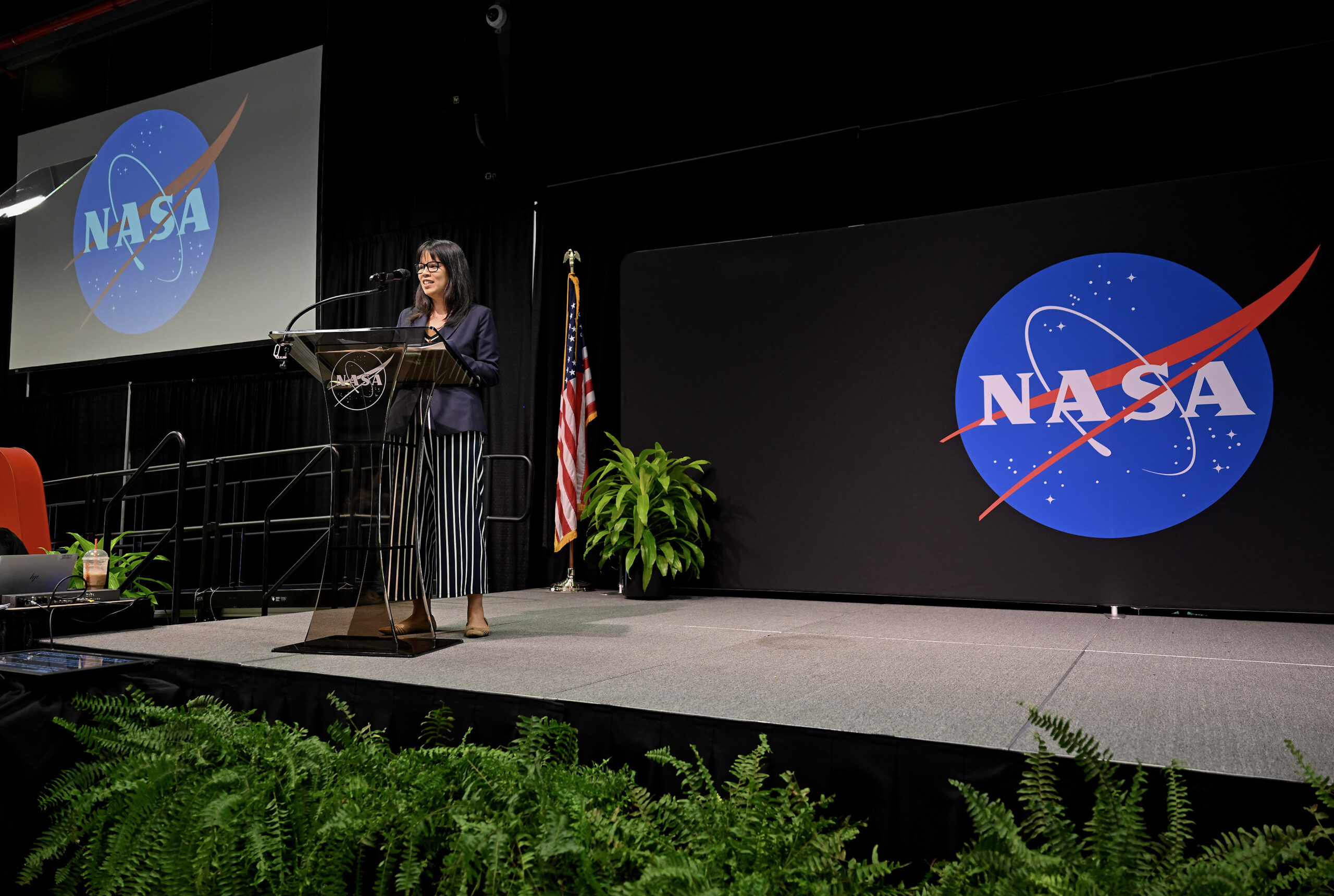NASA Honors Excellence and Innovation in Space Exploration
On August 15, NASA held its 2023 Agency/Center Honor Awards at the Marshall Space Flight Center, recognizing 332 individual team members and 97 teams for their outstanding contributions to the agency’s mission. The event, which took place in Activities Building 4316, featured NASA Chief Financial Officer Margaret Vo Schaus as the keynote speaker. Vo Schaus, who is relatively new to NASA, expressed her admiration for the agency’s extensive work and the dedication of its employees. "As a newcomer to NASA, I am in awe of the work of this agency and the breadth of what we do," she said. "These awards celebrate those who have gone above and beyond in making NASA what it is and who have driven NASA forward in ways that demonstrate this agency’s core values of safety, integrity, teamwork, excellence, and inclusion."
Marshall Center Director Joseph Pelfrey also welcomed the attendees, emphasizing the significance of the awards program in acknowledging the hard work and dedication of NASA’s team. For those interested, a full list of honorees and a video of the ceremonies are available online.
NASA and Boeing’s Starliner Mission: Addressing Technical Challenges
NASA astronauts Butch Wilmore and Suni Williams arrived at the International Space Station (ISS) on June 6 aboard the Boeing Starliner spacecraft. However, the journey was not without its challenges. Engineers noticed that some of the spacecraft’s thrusters did not perform as expected, and several helium system leaks were observed. Since then, engineering teams at NASA and Boeing have conducted multiple thruster tests and in-depth data reviews to understand the issues better. During this period, Wilmore and Williams have been working with the Expedition 71 crew, conducting scientific research and maintenance activities aboard the ISS.
NASA plans to conduct two reviews—a Program Control Board and an Agency Flight Readiness Review—before deciding the safest way to return the astronauts to Earth. The decision is expected by the end of August.
Understanding the Mission and its Delays
The Boeing Crew Flight Test, launched on June 5, is the first flight of the Starliner spacecraft to the ISS with astronauts. The primary goal is to demonstrate that Starliner can execute a six-month rotational mission to the space station, gathering data to support NASA’s certification process for long-duration flights. Initially planned to last about a week, the mission has been extended to allow NASA and Boeing to thoroughly understand the spacecraft’s technical issues, echoing lessons learned from the space shuttle Columbia accident.
In case of an emergency, Starliner remains the primary option for Wilmore and Williams to return home. If NASA decides to return Starliner uncrewed, the astronauts would stay on the ISS until late February 2025, returning to Earth with the SpaceX Crew-9 mission early next year. NASA is still evaluating all options, including the possibility of using a SpaceX Dragon spacecraft for their return.
The Importance of Two Crew Transportation Systems
NASA requires two distinct human spaceflight systems to ensure a continuous human presence aboard the ISS. This redundancy allows the agency to launch and return crew members even if one system encounters issues.
The Astronauts’ Experience and Preparedness
Wilmore and Williams are not "stuck" on the ISS; they are actively involved in Starliner testing and technical meetings. Both astronauts have previously completed long-duration stays aboard the ISS and are well-prepared for extended missions. The ISS is well-stocked with food, water, clothing, and oxygen, and NASA frequently launches resupply missions to ensure the crew has everything they need.
Deep Space Food Challenge: Innovating for Long-Duration Missions
NASA has awarded $1.25 million to three U.S. teams in the final round of the Deep Space Food Challenge. The competition aims to develop sustainable food systems for long-duration space missions, such as future Artemis missions and journeys to Mars. The winners include Interstellar Lab of Merritt Island, Florida, which received the $750,000 grand prize for its autonomous phytotrons and environment-controlled greenhouses. Runners-up Nolux and SATED received $250,000 each for their innovative food production systems.
Roger Baird Appointed Associate Director at Marshall Space Flight Center
Roger Baird has been named the associate director of NASA’s Marshall Space Flight Center, effective August 19. Baird will oversee the center’s business operations, mission support functions, and budget management. With 34 years of NASA experience, Baird brings a wealth of expertise in engineering design, development, testing, and strategic workforce acquisition and development.
SPoRT Center’s Contributions to Hurricane Prediction
The Short-term Prediction Research and Transition (SPoRT) Center at NASA’s Marshall Space Flight Center is converting advanced research into practical tools to enhance weather forecasting, particularly for hurricanes. Collaborating with the National Oceanic and Atmospheric Administration (NOAA), SPoRT utilizes the Geostationary Lightning Mapper (GLM) to gather valuable data on storm structure and intensity changes. Researchers like John Mark Mayhall and Kiahna Mollette are using high-resolution data to understand hurricane behavior better, providing insights that are crucial for predicting hurricane intensification.
Advancements in Understanding Supermassive Black Holes
Using data from NASA’s Chandra X-ray Observatory, Neil Gehrels Swift Observatory, and ESA’s XMM-Newton, researchers have made significant progress in understanding how supermassive black holes consume material. The star system AT2018fyk, located about 860 million light-years from Earth, has provided valuable insights into this process. Researchers observed that a star in this system is on a highly elliptical orbit around the black hole, causing periodic tidal disruption events. These observations help astronomers predict future interactions between the star and the black hole.
Europa Clipper: Preparing for Launch
Technicians at NASA’s Kennedy Space Center have moved the Europa Clipper spacecraft to install its five-panel solar array. The huge arrays will collect sunlight to power the spacecraft as it orbits Jupiter’s icy moon, Europa. Scheduled to launch on October 10, the mission aims to determine Europa’s potential to support life. Managed by Caltech, the mission involves collaboration with several institutions, including the Johns Hopkins Applied Physics Laboratory and NASA’s Goddard Space Flight Center.
Juno Mission’s 3D Radiation Map of Jupiter
Scientists with NASA’s Juno mission have developed the first complete 3D radiation map of the Jupiter system. The map characterizes high-energy particles near Europa’s orbit and the smaller moons near Jupiter’s rings. Utilizing data from Juno’s Advanced Stellar Compass and Stellar Reference Unit, the map provides a detailed understanding of Jupiter’s radiation environment, aiding future missions to the Jovian system.
In summary, these updates highlight NASA’s continuous efforts to advance space exploration, improve safety and efficiency in missions, and innovate for future challenges. Whether addressing technical issues on the ISS, developing sustainable food systems for deep space, or understanding the complexities of supermassive black holes, NASA’s work remains at the forefront of scientific and technological progress.
For more Information, Refer to this article.


































